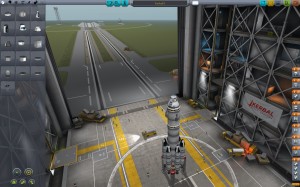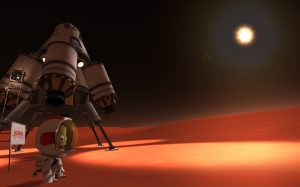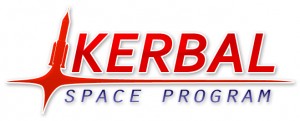Developer: Squad
Where to get it: Steam, or Squad’s own site.
Price: $22.99 (Free Demo Available)
GAME GRADE: A
Roughly two hours into the independent video game “Kerbal Space Program,” I realized that I was in over my head.
I had just spent the better part of a half-hour dreaming up a big-ass rocket to shoot off into space, building it and getting it to the launchpad. When said rocket (which I was sure would be zooming off to the moon in no time flat) turned into a big-ass explosion, I was flabbergasted. I had forgotten to account for the laws of physics: I had made something too heavy with not enough thrust. But I was determined to try again. The game wasn’t frustrating in the least. In fact, it captured my imagination and my persistence was rewarded with an entertaining, open-ended gaming experience.
… I’m getting ahead of myself, aren’t I? Let me start from the beginning. “Kerbal Space Program” (or KSP, for short) is less of a true game than it is a toy box. There’s no campaign to speak of and no real enemy; just a set of tutorials that teach you the basics with simple text narration and funny pictures. Think “Minecraft,” “Skylanders” or “Disney Infinity” with a NASA theme.
The setup is simple: upon starting a game, you’re given all the resources needed to make your own space program (space center, parts, fearless lunatics astronauts, etc.). For once, saying “It’s not rocket science” couldn’t be further from the truth. Exploration is the name of the game: starting from one earth-like planet, players have an entire solar system to muck around in. It’s a daunting premise and something that might alienate prospective players.

Gameplay-wise, KSP can be divided into 2 main components. The first is design and construction: players are given free range to build whatever their imagination can cook up. It’s great fun, but if you want your creations achieving liftoff, you need to plan carefully or else your spacecraft is going to shake itself to pieces… explosively. Once you’ve experimented a bit, you’ll be able to experience the second half of the game.
The second half is piloting what you build. The process is straightforward: throttle your engines and make for the stars. Once you reach space you can establish orbit, and once you’re there you’re “halfway to anywhere,” as the game says. Rocket launches and flights are incredibly exciting, combining all the adrenaline of good action with emotional investment that comes from the rocket in question being unequivocally yours.
The fun doesn’t stop there, though. Once you reach orbit, you get to enjoy gorgeous visuals — seeing a planet rise while orbiting a moon is incredibly striking — and get down to the exploring. Landing on a moon, flying past the sun, and attempting to land and return from another planet are all possible in KSP, but they’re not easy.
KSP is not forgiving; it’s a simulation game and it takes every opportunity to remind you. There’s no improbable flying or physics-defying stunts here, only the laws of physics and gravity. That’s not a bad thing, as it provides a nice challenge and can actually teach the casual player a fair amount about space flight. However, it does mean that the game has a lot of numbers — things like mass, velocity, altitude, drag, force of gravity, all of the sort of things that scientists like to talk about. That’s a lot to take in all at once and this might put people off, but once you do get the hang of it you can learn how to do cool things like gravity assists and aerobrake maneuvers that make you feel like an absolute badass.

There are problems, though. Outside of a single quicksave/quickload function and a “revert” option, the game only autosaves. When your rocket becomes a 30-story lawn dart, you have to revert back to launch if you didn’t quicksave in time. It’s frustrating to see so much work literally go up in smoke. But not quite as frustrating as the time-lapse; a necessity that allows players to speed up time in order to get through the realistic travel times from planet to planet. Time-lapse refuses to work during engine burns (even though some burns for ion engines can last for hours) and slows itself down needlessly depending on altitude.
My nitpicks aside, the scope of the available area to explore is simply outstanding and the fact that it’s all within the grasp of a determined player is amazing. And I haven’t mentioned the best part yet.
The game has excellent mod support. Players can access the official community website that hosts content and downloads are often small and easily installed. This adds near limitless variety to the game and can also add in useful features (one of my favorites adds rudimentary autopilot, making long trips go by smoother and quicker). There’s a caveat, though: some mods can make the game unstable and the game may crash if you have too many installed.
Squad is also updating KSP alongside the community, since the game is still being made (current version as of writing is .21). This is why KSP lacks an official campaign and why some features in the game are still a bit rough around the edges. While this might seem like a reason to pass on the title right now, I assure you that the price tag is well worth the amount of fun that you’ll have while playing this game. At the very least try the demo, which is available for free. KSP might not be for everyone, with its heavy emphasis on physics and the math associated with it, but for those who want to explore, create and imagine in a vast sandbox, you’d be hard-pressed to find something more absorbing than KSP.
I heartily recommend “Kerbal Space Program.” It earns an “A” in my book.







